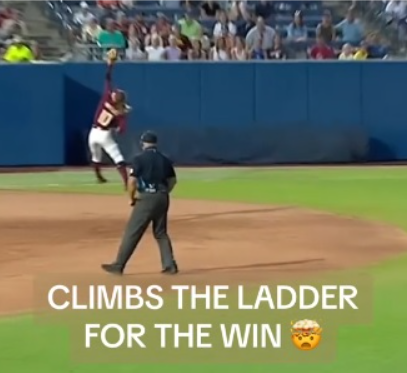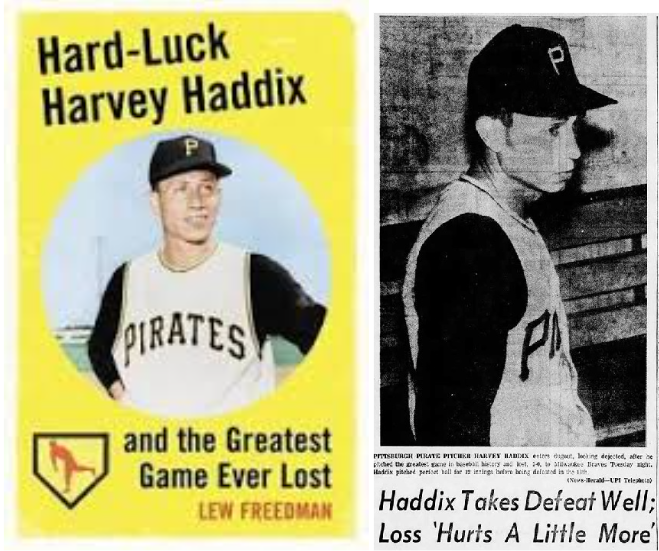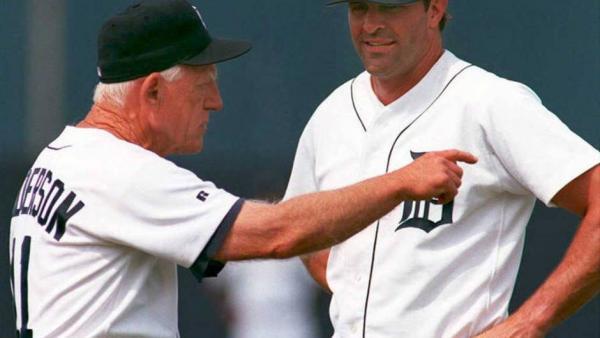NEW CLASSIC SALARIES
New Classic (career-rated) player salaries were introduced at the end of July. (Classic player salaries are adjusted three times annually.)
Topping the list once again is Babe Ruth, whose salary jumped back over $35 million. Moving into second spot ahead of Mickey Mantle is Barry Bonds, with his salary exceeding $28 million for the first time.
Ted Williams got the biggest raise this time around in absolute dollar terms – $2,195,000, from $25,448,000 to $27,643,000. In percentage terms (players with salaries over $3 million), Brett Cecil received the biggest increase – 56.32%, from $2,191,000 to $3,425,000.
Wade Boggs took the biggest cut in dollar terms – $2,577,000, from $17,630,000 to $15,053,000. Yangervis Solarte had the biggest hit percentage-wise (players whose salaries were over $3 million) – 16.65%, from $3,044,000 to $2,537,000.
In all, the salaries of 2,182 players went up, 3,070 went down and 196 were unchanged. There are 290 minimum salary ($500,000) players total. The overall value of the player pool is an eye-watering $21,044,492,000. (This number always remains constant, except when new players are added to the pool.)
NEW PLAYER SEARCH FEATURES
We recently introduced a number of new player search features:
- We’ve uncoupled Batter and Pitcher searches, so that your batter and pitcher search parameters are retained when you switch from one to the other and back again.
- We’ve added the option, when searching for players during a manual draft, to display players you’ve already drafted and who are in your draft queue as well as undrafted players (similar to displaying players on your roster and free agents after a league has drafted).
- You can now search for players by their year or date of birth. (We’ll be adding the ability to search the same day in multiple months in future.)
- If, in your player search, you’ve ticked the box to search AL or NL teams only, this will now be “remembered” and remain ticked in subsequent searches until you untick it.
In addition, when viewing your team’s schedule in the game-by-game display mode, you can now view the league standings as of each day.
Our most ambitious player search feature is still in the development stage: the ability to search for all teammates of a specified player, with all of the various permutations used in creating different types of custom leagues.
REGISTRATION IS NOW OPEN FOR SEASON 46 OF THE LADDER LEAGUES RANDOM 600 ASSOCIATION
Registration is now open for Season 46 of the Ladder Leagues Standard Association.
For those unfamiliar with them, the Ladder Leagues operate similarly to European soccer. The Random 600 Association presently comprises five ranked leagues. At the end of each Ladder Leagues season, the top teams from each league are promoted to higher leagues and the bottom teams are relegated to lower leagues. The promotion and relegation system in the Ladder Leagues ensures competitive leagues with similarly-skilled owners.
RA600 leagues are manual draft leagues, which draft from a random pool of just 600 players. They are set in the Moneyball era of play and otherwise use all Standard League rules, with the DH in effect in alternate seasons. In Season 46, the DH will be off.
Many long-time participants in the RA600 leagues consider them to be their favorite league format. Why not give it a try?
HARD LUCK HARVEY
On May 26, 1959 at Milwaukee’s County Stadium, Harvey (“Kitten”) Haddix was perfect against the Braves for 12 innings, only to lose, first his perfect game (on a throwing error by Don Hoak that allowed Felix Mantilla to reach base to lead off the 13th), then, two batters later, his no hitter, and the game, 1-0, on a double by Joe Adcock.
The agony didn’t last 12 innings this time, but, pitching for Tim (timstara) Stara’s Going Little Staying Home team in the Feast to Famine 26 league, history repeated itself for Haddix. Despite holding Doug (thecolonel) Laipple’s Crime and Punishment team hitless, Haddix took the loss in a 1-0 defeat.
CUSTOM LEAGUES KINGS
This week we’re talking with Bob (wolves1997) Stowell.
Click here to read more.
THE TIPPING POINT
Each month we’ll offer a few tips in this space that may come in handy for the beginner as well as the experienced team owner.
There has been a lot of discussion on the Advice board about a strategy built around two “uber” relievers, but it’s rather scattered across a number of different posts.
The strategy is attributed to Tyler Ensor. A comment of his in one of the posts on the subject particularly caught my attention: “I think getting the most out of bullpens and rotations is one of the biggest advantages people who win a lot have.”
I asked Tyler if he’d expound on this statement for this month’s Tipping Point. Here is what he had to say:
“This is an asset-allocation game.” This statement captures a fundamental principle of DMO. Usually, the statement is made when explaining the concept of value to new owners: Try to sign players whose salary is lower than it should be. However, the principle doesn’t end when a roster is put together. A player is only an asset to your team to the extent that he is utilized correctly.
At present, I have William Hoy and his $4,779,000 price tag as one of the best values in center field (unless otherwise noted, everything in this post is with respect to default, Standard League parameters). Hoy is a good value, and it makes sense to plug him into my lineup as the everyday center fielder.
What would you think if, instead, I signed Hoy to play center field only against right-handed pitchers? I sign Ryan Freel ($4,146,000) to play center field against lefties. On paper, this Freel/Hoy platoon is better than either individual player. However, both players are everyday players, and thus platooning them represents an under-utilization of their abilities. This platoon is an instance of poor asset allocation
Hopefully, everyone agrees that utilizing Hoy or Freel in this way would be counterproductive. Both are values only when used as everyday players, not when platooned.
With position players, it’s easy to see how to extract full value: Start them every game at their designated position. Where owners often stumble is in extracting full value from pitchers.
Like position players, a pitcher is only valuable to the extent that you extract full value from him. Pedro Martinez is a waste of money if he’s going to be your closer. He’ll excel at the role, but he’s priced to start 45 games and throw ~300 innings, not to sit in the back of the bullpen and throw ~80 innings. This is an extreme example, but it illustrates the point I want to make: One of the biggest factors separating strong owners from less-experienced owners is pitcher utilization. At the end of the season, successful owners will usually have more innings from their best pitchers than less successful owners.
In the Standard Era, you should always double ace your best two starters. This gives each pitcher 45 starts. Your third and fourth starters then get 36 starts. A team using a straight five-man rotation gets 33 starts from their first two pitchers and 32 starts from the remaining pitchers. So, the team with the double-ace rotation will have 24 more starts from their best pitchers than will the team with the straight five-man rotation.
What if, instead of a straight five-man rotation, the other team uses a spot starter? Now, this team gets a combined 72 starts from their best two pitchers, 18 fewer starts than the double-ace team. With a straight four-man rotation, the different shrinks further, but is still present (9 extra games from the aces for the double-ace team). Simply put, failing to ace your best two starters is analogous to signing William Hoy but not playing him every day.
Isn’t there a yo-yo effect when pitchers start on short rest? Kind of, but it’s much less of a factor than one might think. Occasionally, your ace might hit the mound with only 80 pitches in his window. This might mean he’s pulled an inning or two earlier than he otherwise would have been. These rare, short starts simply cannot offset the number of starts you’re missing if you fail to ace.
What about relievers? Here, again, I see a lot of wasted money. If a reliever has Vg or Ex durability, he’s wasted if listed solely in the closer role. In the Standard Era, these pitchers should be in long and setup, or in long, setup, and closer. If a pitcher costs more than $2,000,000 and has Vg or Ex durability, he should be in at least two relief roles. Pitchers of lesser durability can also handle this workload, especially if they’re elite. On a recent team, I got more than 100 innings from each of Billy Wagner and Joe Nathan by putting them in all three relief roles.
If you want your closer to be available for all save opportunities, then list him only in the closer role, but don’t pay for Vg or Ex durability.
How many pitchers should you carry? In the Standard Era, I think the answer is ~9. You definitely do not want more than one mop-up pitcher, and you’re usually better off with no mop-up pitchers on the active roster. Don’t worry about “wasting” your good relievers by having them pitch three or four innings in a lopsided game. Relievers in the Standard Era can throw a staggering number of innings, and the chances of their not being available in a game affecting that game’s outcome are extremely slim. What you definitely do not want is too many relievers: If you have too many relievers, they will step on one another’s innings.










Leave A Comment